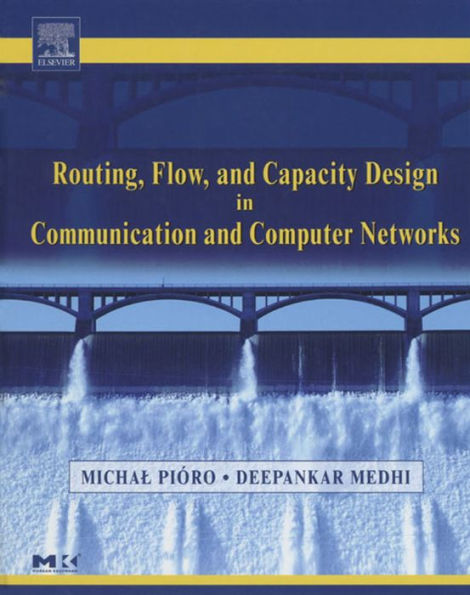Routing, Flow, and Capacity Design in Communication and Computer Networks
In network design, the gap between theory and practice is woefully broad. This book narrows it, comprehensively and critically examining current network design models and methods. You will learn where mathematical modeling and algorithmic optimization have been under-utilized. At the opposite extreme, you will learn where they tend to fail to contribute to the twin goals of network efficiency and cost-savings. Most of all, you will learn precisely how to tailor theoretical models to make them as useful as possible in practice.
Throughout, the authors focus on the traffic demands encountered in the real world of network design. Their generic approach, however, allows problem formulations and solutions to be applied across the board to virtually any type of backbone communication or computer network. For beginners, this book is an excellent introduction. For seasoned professionals, it provides immediate solutions and a strong foundation for further advances in the use of mathematical modeling for network design.
1100725843
Throughout, the authors focus on the traffic demands encountered in the real world of network design. Their generic approach, however, allows problem formulations and solutions to be applied across the board to virtually any type of backbone communication or computer network. For beginners, this book is an excellent introduction. For seasoned professionals, it provides immediate solutions and a strong foundation for further advances in the use of mathematical modeling for network design.
- Written by leading researchers with a combined 40 years of industrial and academic network design experience.
- Considers the development of design models for different technologies, including TCP/IP, IDN, MPLS, ATM, SONET/SDH, and WDM.
- Discusses recent topics such as shortest path routing and fair bandwidth assignment in IP/MPLS networks.
- Addresses proper multi-layer modeling across network layers using different technologies—for example, IP over ATM over SONET, IP over WDM, and IDN over SONET.
- Covers restoration-oriented design methods that allow recovery from failures of large-capacity transport links and transit nodes.
- Presents, at the end of each chapter, exercises useful to both students and practitioners.
Routing, Flow, and Capacity Design in Communication and Computer Networks
In network design, the gap between theory and practice is woefully broad. This book narrows it, comprehensively and critically examining current network design models and methods. You will learn where mathematical modeling and algorithmic optimization have been under-utilized. At the opposite extreme, you will learn where they tend to fail to contribute to the twin goals of network efficiency and cost-savings. Most of all, you will learn precisely how to tailor theoretical models to make them as useful as possible in practice.
Throughout, the authors focus on the traffic demands encountered in the real world of network design. Their generic approach, however, allows problem formulations and solutions to be applied across the board to virtually any type of backbone communication or computer network. For beginners, this book is an excellent introduction. For seasoned professionals, it provides immediate solutions and a strong foundation for further advances in the use of mathematical modeling for network design.
Throughout, the authors focus on the traffic demands encountered in the real world of network design. Their generic approach, however, allows problem formulations and solutions to be applied across the board to virtually any type of backbone communication or computer network. For beginners, this book is an excellent introduction. For seasoned professionals, it provides immediate solutions and a strong foundation for further advances in the use of mathematical modeling for network design.
- Written by leading researchers with a combined 40 years of industrial and academic network design experience.
- Considers the development of design models for different technologies, including TCP/IP, IDN, MPLS, ATM, SONET/SDH, and WDM.
- Discusses recent topics such as shortest path routing and fair bandwidth assignment in IP/MPLS networks.
- Addresses proper multi-layer modeling across network layers using different technologies—for example, IP over ATM over SONET, IP over WDM, and IDN over SONET.
- Covers restoration-oriented design methods that allow recovery from failures of large-capacity transport links and transit nodes.
- Presents, at the end of each chapter, exercises useful to both students and practitioners.
79.95
In Stock
5
1

Routing, Flow, and Capacity Design in Communication and Computer Networks
800
Routing, Flow, and Capacity Design in Communication and Computer Networks
800
79.95
In Stock

Product Details
| ISBN-13: | 9780080516431 |
|---|---|
| Publisher: | Elsevier Science |
| Publication date: | 07/21/2004 |
| Series: | Morgan Kaufmann Series in Networking |
| Sold by: | Barnes & Noble |
| Format: | eBook |
| Pages: | 800 |
| File size: | 13 MB |
| Note: | This product may take a few minutes to download. |
About the Author
From the B&N Reads Blog
